What do health departments do?
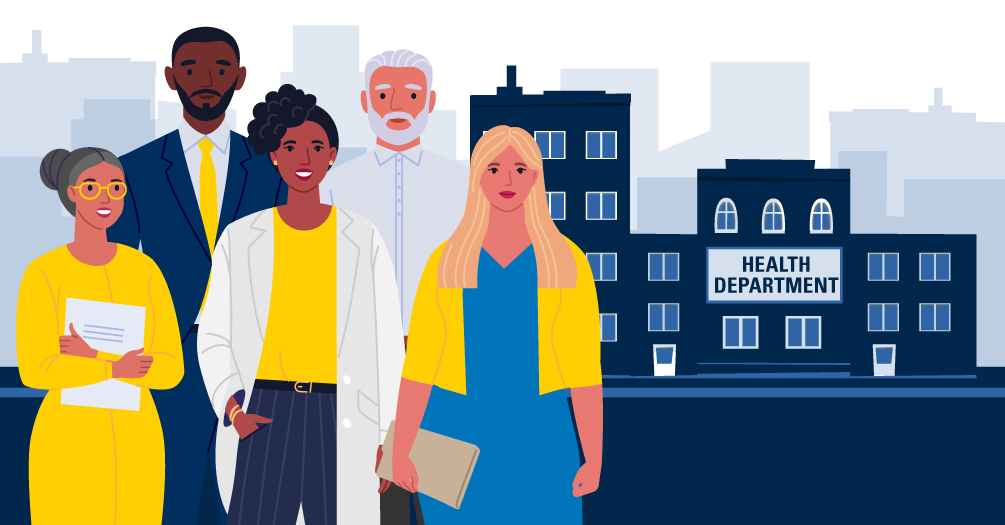
The pandemic highlighted the important role health departments play in communities large and small. But the role of a health department extends well beyond pandemic response. Assessing water quality, ensuring restaurants are following food safety practices, ensuring health care access and more. Health departments manage many health-related priorities to improve the lives of community members.
In this episode, learn about the ways health departments protect the health of their communities through their services and the need to build a strong public health infrastructure. We’ll also talk to individuals working in health departments to learn how their work impacts the communities they serve.
Listen to "What do health departments do?" on Spreaker.
|
Subscribe and listen to Population Healthy on Apple Podcasts, Spotify, Google Podcasts, iHeartRadio, YouTube or wherever you listen to podcasts! Be sure to follow us at @umichsph on Twitter, Instagram, and Facebook, so you can share your perspectives on the issues we discussed, learn more from Michigan Public Health experts, and share episodes of the podcast with your friends on social media. |
0:00:04.7 Speaker 1: You're hearing the sounds of waves lapping up against the seawall. Here in the Great Lakes state, we know a bit about waves. Sometimes the water is smooth. Sometimes it's choppy. Sometimes it's downright dangerous. But the waves, they just keep coming. The seawall is there to protect the shoreline and the land just beyond, and here is where we start our metaphor.
0:00:33.7 S1: There are 45 local health departments in the State of Michigan, and there are nearly 3000 more across the other 49 states in America. Just like the seawall, they stand up to daily threats out there. Sometimes the waves are rough, sometimes they're smooth, but the waves are always there.
[music]
0:00:57.0 Laura Power: In one of my classes, we were talking about all the things that public health departments are focusing on right now, and with COVID, a lot of their attention has been really on responding to the COVID pandemic. One of our students pointed out that a health department and as well as many others, have acknowledged racism as a public health issue, and wondering about how the Health Department could focus on that while at the same time they're still so focused on responding to COVID.
0:01:26.0 LP: So it was pointing out the issue of all the other things that public health needs to and wants to work on, but it also just helped us recognize that with COVID, it brought up a lot of the underlying issues around health equity. Those were there before COVID and they were really brought to light maybe more with COVID, and just shows the important work that health departments do.
0:01:48.6 S1: That was Laura Power, a Clinical Assistant Professor of Epidemiology at the University of Michigan School of Public Health, where she's also the director of the Office of Public Health Practice. She's describing what health departments face with never-ending waves coming at them. How do they adjust, prioritize and balance everything to keep their communities safe?
0:02:10.2 S1: Now, health departments and their personal don't typically make headlines, just like those sturdy seawalls protecting the shoreline, but throughout the COVID-19 pandemic, it seemed like each decision was scrutinized. Hailed by some, derided by others, health departments were in the spotlight. And while COVID-19 is still top of mind for many, the pandemic response is just one facet of health departments' work.
0:02:36.8 S1: So there's 3000 health departments out there, and we'll spend today's episode discussing, what do health departments do? Hello and welcome to Population Healthy, a podcast from the University of Michigan School of Public Health. Join us as we dig into important health topics, stuff that affects the health of all of us at a population level, from the microscopic to the macro-economic, the social, to the environmental, from cities to neighborhoods, states to countries, and around the world.
[music]
0:03:18.0 S1: We'll hear from a range of individuals who spent time working in health departments, to learn about the various services they provide to improve the lives of the communities they serve, how we can support health departments and more. We'll also hear several examples of community work facilitated by health departments and how they impacted their community's population.
0:03:37.5 S1: We'll start off with Matthew Boulton, a professor of Epidemiology and Global Public Health at the University of Michigan School Public Health. Bolton's three and a half decades in medicine and public health will help to give us a clearer picture of the scope of a health department's responsibilities.
0:03:52.0 Matthew Boulton: Health departments are the governmental agency that has primary responsibility for population health, and when I say "population", that can be a village, a city, a county, a state, or even an entire nation, in the case of the US Centers for Disease Control, which is probably the largest public health agency in the world.
0:04:14.6 MB: Importantly, that focus on population health sets public health apart from organized medicine, 'cause organized medicine focuses on the individual, and again, public health focuses on the health of populations. So I'm a physician and I spent many years seeing people in the clinical setting, diagnosing and treating them, but I'm also a public health practitioner and spent 17 years in local, state and federal public health practice.
0:04:45.3 MB: Those two roles were very different. As a physician, my focus again was on the individual who is in front of me, diagnosing and treating them, but in Public Health, our focus is much more about health promotion and disease prevention. That is, we're interested in intervening to prevent or reduce the risk of disease and promoting health. We do that to a lot of different programs, like immunizations and nutrition programs like WIC, Women, Infant and Children, nutrition program, worksite wellness programs, and reducing risks related to environmental exposures like lead.
0:05:22.0 MB: When I started out in Public Health over 30 years ago, so in the late 1980s, health departments, especially local health departments were providing lots of direct clinical services. They had a fairly large staff of physician and nurses who saw patients for a lot of different services; family planning and sexually transmitted infections, tuberculosis, primary care, prenatal care, pediatric care, but that focus on providing direct clinical care really took the Health Department away from the community and community outreach, where they really needed to be to promote population-level health.
0:06:00.6 MB: So in the late 1980s, there was a really important report that came out from the Institute of Medicine called The Future of Public Health, and that report said, we need to return to our community roots and kind of move away from this direct clinical service provision, which is eating up all of our resource.
0:06:20.2 MB: What they said in that report, they said we really need to focus on assessment assurance and policy development, working with community partners to identify what are the important public health issues facing that community, as defined by that community in a community-centered process. Making sure those services are available to the community members.
0:06:43.8 MB: So not that Public Health needs to deliver those services themselves, but ensure that people, the community members can get access to tuberculosis treatment, and treatment and diagnosis of sexually transmitted infections and immunizations, and then taking that a step further and ensuring that public health policy is developed that helps assure health promotion in the community.
0:07:10.0 MB: It was a new role that kicked off the centrality of health departments, especially local health departments in community health assessment, where they have primary responsibility for assessing the health of the community, working with community partners, so working with HMOs and hospital systems and community-based organizations and individual citizens. Now, Public Health doesn't do all this work on its own. It works, when it's successful, in partnership with all these different groups to ensure the health of the community.
0:07:43.4 S1: Boulton shares that throughout the 1980s and '90s, health departments varied tremendously in what they did around the country. Because of this, the 10 Essential Services of Public Health came about, standardizing some of the main services components that health departments provide even today.
0:07:58.1 MB: So these are 10 key services that all health departments at the local and state level are expected to provide. So things like monitoring the health of the population, investigating disease outbreaks, assuring a well-trained health workforce, conducting public health research, conveying health communications to the population. And that was tremendously valuable because it really laid the groundwork for the eventual rise of public health accreditation.
0:08:31.7 MB: So just as schools of public health go through an accreditation process, so now do health departments go to an accreditation process, and the foundation of that accreditation are those 10 Essential Services of Public Health. That is, are they doing them? And how well are they doing them? Not just them, but also how well are they partnering with area hospital systems and community-based organizations and other key partners that are essential to assuring health of the community?
0:09:05.6 MB: And that's been a really important development for public health, and improving the standardization and comparability of services that a person could expect to receive, whether they're in Washtenaw County, Michigan, or Maricopa County, Arizona.
[music]
0:09:29.8 S1: Robert Pestronk agrees. He's a Michigan Public Health alumnus and former health officer for Genesee County here in Michigan. He also previously served as executive director of the National Association of County and City Health Officials. That's an organization that seeks to strengthen, support and advocate for the nearly 3000 local health departments across the US.
0:09:48.7 Robert Pestronk: Fundamentally, the job of a local health department is to prevent bad outcomes from happening in the first place, and that's something that often distinguishes it from other organizations in a community, this idea of prevention. It's like talking about things as accidents rather than talking about them as injuries.
0:10:05.1 RP: If you talk about them as accidents, then the sense is, "Well, they just kinda happen and there's nothing that can be done, it's an accident." If you talk about it as an injury, then you start to ask yourself, "Why are people getting injured?" And that's fundamentally the role and the orientation of a local health department.
0:10:21.1 RP: This notion of inequities, structural inequities that are built into communities, racism as a perfect example, the role of the local health department is to point those out, to call people out, and to organize people to address these institutional and structural and personal inequities that exist everywhere. And not to criticize people for them, but to say, "Listen, improving these and changing these is part of what makes America less imperfect over time."
0:10:53.2 S1: Pestronk highlights that lack of proper resourcing, whether that be people, funding, or technological resources, is a chronic issue that has plagued health departments.
0:11:03.4 RP: I've always thought that improving the infrastructure of local health department is fundamentally a resource issue. People have made light over that over time, I've been criticized for making this point. For those who've worked in this field, they know the truth of needing resources. It's not just any resources, but it's flexible and continuous funding.
0:11:28.2 RP: Local health departments look for every dollar every year, and frequently the funding they get is of a categorical nature. That means that it's directed at a specific problem. And they're all important problems, they all have their own constituencies that have argued to have resources at the federal level or the state level, applied to remedy this disease or to address this particular circumstance or inequity.
0:11:52.4 RP: The overall organizing nature of the best local health department work means that it needs funding to address whatever is important in that local jurisdiction, and that might not always be what people in Congress or people at the state think is important, and that may very well not be what the people of that community think is most important.
0:12:13.1 RP: And to do the most effective work at permanently remedying a situation in a community requires the people in that community to want to have that be part of the solution. And for health departments to organize that work, they need people to spend time on it. It's labor-intensive to form trusting relationships, it's labor-intensive to overcome the bad practice of the past and to help convince people in the community that the health department is on their side and wants to make things better.
0:12:45.1 RP: Flexible funding that can respond to the assessed needs of a community and can morph in one direction or another over time, is I think one of the most essential ways to improve the infrastructure. The other, which is getting a lot of attention right now, has to do with the hardware, software and workforce that's necessary to have health departments be fully connected to the digital universe.
0:13:12.8 RP: We've seen in the pandemic how poor the system was at figuring out who was infected, who was tested, who was getting treated, where people were going for help, how supplies were being distributed within communities, who in the community was doing what kinds of work, who was being immunized?
0:13:31.1 RP: There's no secret to what's needed to have good hardware, good software and good people working in any organization, but that's fundamentally a resource issue too. You have to pay people well in an organization in order to have them stay, and I think local health departments because they're part of government, in all jurisdictions are often challenged to pay people the salaries and provide them with benefits that will make them competitive, particularly with the clinical sector and some of the non-profit setting as well.
0:14:02.1 S1: Bolton agrees.
0:14:04.1 MB: I have found it ironic that there's been criticism from politicians especially, but also the media and the public about the response to COVID, but that's a direct reflection of this chronic under-funding and under-resourcing of health departments that's occurred over time. I think people forget that health departments answer to political bodies.
0:14:27.6 MB: In local health departments in Michigan, they answer to county commissioners, and county commissioners are a elected political body, and sometimes those political bodies are supportive and believe in public health, and sometimes they do not. And that's typically reflected in the amount of funding support that they provide to those agencies.
0:14:49.0 MB: It's also true at the state level, that the state health department in most states answers to the state legislature, and sometimes you have state legislatures that are supportive of public health and believe in public health, but sometimes they don't. There needs to be a reckoning in this country and a reconciliation between what we expect of governmental public health and health departments and what we're willing to invest in those.
0:15:14.6 MB: One of the challenges with public health practice for health department is when they're doing their job well, a lot of times it's invisible to the public. The public don't think about that clean water that they're drinking and those safe foods that they're eating, and the availability of immunizations and the outbreak that doesn't happen because health departments are doing their job.
0:15:39.3 MB: But that presents a challenge, because again, that work can be invisible to the public, but you need visibility and you need advocacy especially, in order to drive the legislative process to ensure that there's an adequate investment in public health. Again, I think that could be one of the positive developments from the COVID-19 pandemic.
0:16:03.4 MB: I think there has been a realization in states at the local level, the state level, and at the national level, that we really need a sustained investment in public health, not a one-off. We've seen this before. I led the state response to the first SARS pandemic and West Nile virus and the first wave of pandemic influenza. Tere was a huge infusion of money that came, from the federal government and from the state, everybody loved public health and support us. Three years later, that was almost all gone.
0:16:34.5 MB: We have this cycle in this country where we ramp up funding and support to public health when there's issues that need to be addressed, but then after those disappear, so does the funding, and we've got to get away from that boom and bust cycle of funding for public health and instead, commit to a sustained investment that allows us to have an adequately sized, well-trained, well-resourced public health workforce.
[music]
0:17:09.9 S1: To get insight into some of the kinds of work undertaken at local health departments, we spoke with a pair of individuals from two different Michigan health departments. First up is Meredith Buhalis. She's the program manager at the Washtenaw Health Plan. It's a non-profit that serves as the access to care arm of the Washtenaw County Health Department.
0:17:26.8 Meredith Buhalis: In that role, we help people sign up for health insurance, whether that is Medicaid, marketplace, or their employer insurance. We help people make appointments, we help people with billing, with charity care, with all kinds of things, and all kinds of things related to them getting the healthcare that they need, whether that's primary care, specialty care.
0:17:50.3 MB: So a lot of our referrals come from other programs within the health department, and since we're right here, it's very easy. So we work with WIC, we work with the Maternal Infant Health Program, we work with Children's Special Healthcare Services, people who come in for vaccines or immunizations or pregnancy tests and don't have health insurance, they walk them right over to us and we help them get health insurance.
0:18:15.6 MB: There are two other things that we are. One of them is we are a safety net healthcare program for people who are not eligible for any other healthcare. A Washtenaw County resident who is lower income and is not eligible for healthcare through their employer or because of their immigration status, or maybe there are some other reasons, can sign up for the Washtenaw Health Plan. We pay a per member per month price for them to get primary care. We pay for their specialty care, they get prescription coverage, we help them access dental and mental healthcare. So we really try to help people who can't get help anywhere else.
0:19:00.4 MB: The third thing that we do is we help people. We help anyone who comes to us with questions about health insurance. We're all marketplace navigators or certified application counselors. We help people apply for Medicaid, we help people apply for food benefits, we help people who are having difficulties with DHS, we help them navigate public benefits and applications. We have community health workers, we have member services specialists, we have outreach workers, different roles help people at different levels.
0:19:34.3 MB: We like to say WHP, Washtenaw Health Plan, WHP "We Help People". So people come to us, if we can't help them, we are going to call and make an appointment with somebody who can help them. We see a lot of people. Pre-COVID, we had about 3500 people coming through our offices in a year, so a lot of times we identify problems or can see things that are coming down the pike with regards to health insurance or problems in the benefits programs, things like that, and will alert Michigan Department of Health and Human Services executives about, "Hey, we're seeing this problem."
0:20:13.3 MB: We also work closely with our local Department of Health and Human Services, the Washtenaw County case workers and program managers. We have a really pretty good relationship with them, they know who we are and we know them, so we email and with permission from my clients, we really have a relationship where we can resolve things pretty quickly for them.
0:20:37.6 MB: The Washtenaw Health Plan staff know an enormous amount about healthcare. I think we're pretty unique, in that we help people with so many different things, we have relationships across the county and across the state. There are things we can't do, but we will make sure that somebody is on the path to get their problem solved as far as we can go with them. I really like that about us.
0:21:03.4 MB: I also like that we're always looking for new ways to solve problems, we're working with the health systems and with other community organizations on providing mental health services for people who don't speak English or don't have access to therapy, which is a huge issue. We are the stewards of the Washtenaw County Dental Fund, so we help people get dental care, which is a huge issue, and we'll kind of take on any challenge and if we can manage it, we'll do it. So I really like that about my job and about the people I work with.
[music]
0:21:45.0 S1: Brian Hartl is an epidemiologist at the Kent County Health Department. A graduate of Michigan Public Health, Hartl is also the director of the county's Center for Community Health Strategy.
0:21:56.6 Brian Hartl: In 2018, our Health Officer wanted to establish Kent County as that chief health strategist in our community and really enhance our capacity to build partnerships with community organizations, strengthen our ability to provide locally relevant data, and also to look for funding that was flexible and sustainable to support our community health improvement efforts.
0:22:17.2 BH: So that was kind of the initial phase of this back in 2018, just a few staff members joined the Center, and then as time went by we had added more and more people, several epidemiologists joined the Center. In January of 2020 I was appointed director of the Center. One of the main efforts out of our Center is our community health needs assessment. We have an epidemiologist who oversees our community health needs assessment and our community health improvement plan.
0:22:41.7 BH: So just at the end of last year, we started getting back into our community health improvement plan. We have four priorities that were identified, working with our community partners to run work groups around that. We have an opioid task force, it runs out of the Center, so a lot of partners are engaged in that work to really prevent opioid overdose. We have a epidemiologist that runs that group.
0:23:01.4 BH: We have a lead action team that is focused on obviously preventing lead poisoning in our young population here and around Kent County. We also have some collaboratives that we convene around suicide, and maternal and infant health. So it just gives you an example of stepping that convening role here to bring a number of partners together to address a variety of health topics.
0:23:22.7 BH: Throughout my career in public health, really working with community has been sort of the thing that brings me joy, that fulfillment of when you are able to listen to a community and hear what they mean, and then to be able to use your expertise and data and writing grant proposals to bring funding to the communities to really support them in what they see as strategies that will help improve their health. We've been pretty successful in doing that.
0:23:51.2 BH: We just received a grant from the Department of Health and Human Services to fund a community navigator model, so we work with these organizations to hire people from the communities to serve in a role of advocates and to provide outreach education to the community members around COVID and other health issues.
0:24:07.8 BH: And so really that's what drives me, is to listen and to be successful in bringing resources in the community, not just to support them in their health, but also provide them with jobs and things like that, because we all know that those are important, and really establishing health equity is one of the things that we strive for. And that's what keeps me coming to work each day and what fulfills me.
[music]
0:24:34.3 S1: We'll let Robert Pestronk take us out. We asked him to recount some of his most memorable experiences during his time as health officer for Genesee County.
0:24:44.1 RP: If you talk with any local health official, he or she, however they characterize themselves, will have a story to tell you. When people ask me what I feel best about my work in Genesee County, there are lots of things, but typically I'll mention three. One is that we had some of the earliest tobacco prevention regulations in the State of Michigan and in the country. This limited access to people to tobacco.
0:25:09.2 RP: For Genesee County there, at the time I was there, 435,000 people, that's the number of people who die annually from tobacco-related diseases in the United States. So I wanna talk with my commissioners about adopting regulations, I said, "What's the impact of this? Let's think about everybody in Genesee County dying every year, over and over again." We were able to cut back on the use of tobacco and on tobacco-related illness.
0:25:34.0 RP: The second thing I mentioned is that through the health department and working with with people in the community, and all of these things required work with other people in the community. We established a non-profit organization following an assessment of who didn't have access to clinical care.
0:25:48.7 RP: What we realized was that people got access to clinical care through insurance at their workplace, they got access to clinical care because they're wealthy enough to afford it themselves, they got access to clinical care because they are eligible for a public program, Medicare, Medicaid, eventually CHIP.
0:26:05.9 RP: But sitting between those three points of access were close to 40,000 people, 10% of the people in the community of Genesee County who had no way to access clinical care. And so we set about over a period of time, creating a program which gave all of those people access to clinical care.
0:26:24.8 RP: People asked me at the time that I was helping to create this, "Well, let's just create this program in the Health Department," and I said, "No, I don't want this in the Health Department. I want people who get clinical care in the same place I get clinical care." And what we were able to do was to create that program long before ObamaCare, and people said, "You know, eventually this will become a federal responsibility."
0:26:43.4 RP: I said, "Well, you give up your clinical care and wait until it becomes a federal responsibility, and then tell me that we shouldn't create this program," awaiting what became ObamaCare, which is still trying to expand to cover everyone. What we did with that program at a desperate economic time in Genesee County is we ask the people of Genesee County raise their taxes to pay for the program, after demonstrating what some of the successes that the program were, and illustrating how anyone in the community could be without clinical care.
0:27:14.3 RP: They passed this tax the first time around, overwhelmingly, almost by a greater margin than any millage had been passed in Genesee County in the past, and they've re-upped that millage twice since that time, recognizing how important this program is. It's a flexible source of funding to provide care for everyone.
0:27:34.0 RP: The third thing that I talk about as an illustration of my work and my work with partners in the community was the reduction of African-American infant death. During the time that we were working specifically on this, we pointed out the disparity that existed between African-American and European American infant death, which was three times.
0:27:52.9 RP: We pointed out the numbers of Black Americans, infant Americans who were dying, and said, "This doesn't have to happen." That racism is part of this, and you're seeing now discussion about how much racism affects the health outcomes for African-Americans, and it's structural and institutional in nature.
0:28:15.5 RP: We said, "This has to do with the way in which the clinical care system is organized." Over a seven-year period, we did in fact reduce the disparities between African-American and European American infant death and changed the culture of practice. The problem with programs like this, these were grant funded, is that eventually the funding goes away, and the opportunity to spend time on it is limited.
0:28:44.3 RP: This goes back to the issue that we talked about earlier, the need for continuous funding and continuous support. Infant mortality wasn't the high priority, chronic disease was the high priority at that time at CDC. What we told the folks at CDC was, all of these chronic and communicable diseases that are long-standing in communities, all of these disparities that exist in health status, like infant mortality or in diseases, diabetes and cardiovascular disease, they all have roots in the same soil and they're all gonna require organizations at large in the community; non-profit, governmental, academic, clinical, legal, housing, to deal with the same kinds of stuff.
0:29:24.9 RP: And what you need fundamentally, initially is to build a success somewhere, and then to use the same strategies to build out from there. Because if you can gain the trust and the organization of people around an issue and show them that they've been successful, you're more likely to be successful with initiatives in the future.
0:29:42.8 RP: And if you're not successful with future initiatives in the future, then to have the social capital to build on the failure and to say, "This didn't work, what do we get wrong, and what can we do to do better next time?" And that's fundamentally the cycle of quality improvement that's necessary in any community in order to change the nature of health status in the community.
0:30:05.3 RP: The best work of governmental public health departments should not be invisible. It became very visible during the pandemic. Most of the time, it's kind of not even on the radar screen of most people, even though the fact that we're drinking clean water, the fact that most people can have access to healthy food, the fact that there are housing standards, the fact that there are traffic standards around the country, it's all fundamentally the work at some point of governmental public health departments, or their work with partners in the community.
0:30:36.8 RP: That should always be talked about and spoken to. The work of governmental public health departments at the local level should never be in the background, and it should never be invisible. There's always something that needs to be addressed or that could be better than it is right now, and that's the opportunity to raise the profile of the work of governmental public health departments, local health departments and their partners as they stake out a position, which is, it doesn't have to be this way. It can be better. Let's work together to make it better. And then to celebrate our success, and then to figure out what the next thing to give attention to is.
[music]
0:31:19.7 S1: On the next edition of Population Healthy...
0:31:23.4 Speaker 7: In general, I would say that most food which are better for the health are also better for the environment. It's not always correlated. To reduce the environmental impact, moving towards a vegetarian-based diet is in fact more important than, for example, taking organic food instead of conventional food. Where if you have organic food, you reduce a bit your production, you reduce also your impact, but as a whole, per kilo produced, you are in the same range. Whereas changing from meat-based to more healthier has both gain for nutrition and for the environment.
[music]
0:32:08.4 S1: Thanks for listening to this episode of Population Healthy from the University of Michigan School of Public Health. We're glad you decided to join us and hope you learned something that'll help you improve your own health or make the world a healthier place. If you enjoyed the show, please subscribe or follow this podcast on iTunes, Apple Podcast, Google Play, Stitcher, Spotify, or wherever you listen to podcasts.
0:32:26.6 S1: Be sure to follow us @UMICHSPH on Twitter, Instagram and Facebook, so you can share your perspectives on the issues we discuss, learn more from Michigan public health experts, and share episodes of the podcast with your friends on social media. You're invited to subscribe to our weekly newsletter to get the latest research news and analysis from the University of Michigan School of Public Health.
0:32:44.4 S1: Visit publichealth.umich.edu/news/newsletter to sign up. You can also check out the show notes on our website population-healthy.com for more resources on the topics discussed in this episode. We hope you can join us for our next edition, where we'll dig in further to public health topics that affect all of us at a population level.
[music]
In This Episode
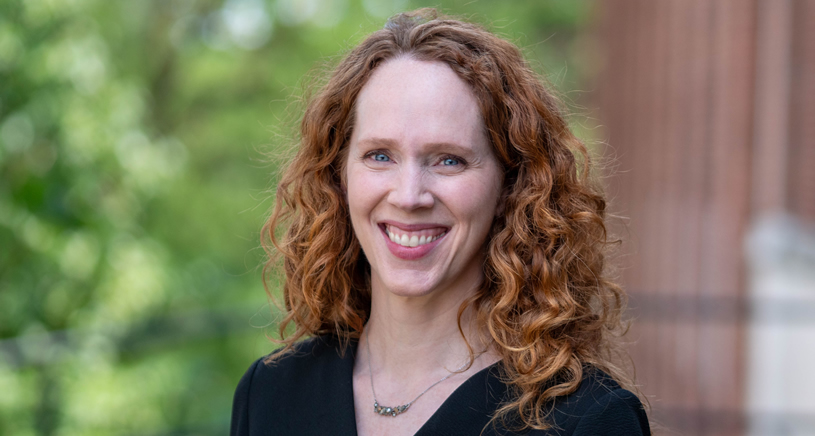 laura power
laura power
Clinical Assistant Professor of Epidemiology
Director, Office of Public Health Practice
University of Michigan School of Public Health
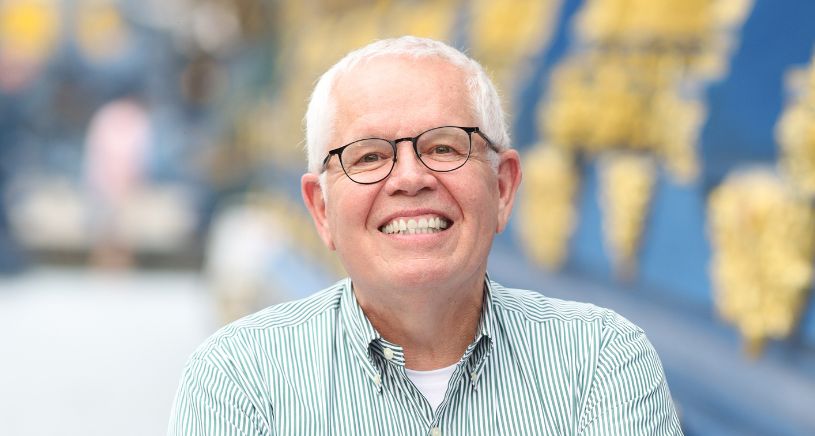 Matthew L. Boulton
Matthew L. Boulton
Senior Associate Dean for Global Public Health
Pearl L. Kendrick Collegiate Professor of Global Public Health
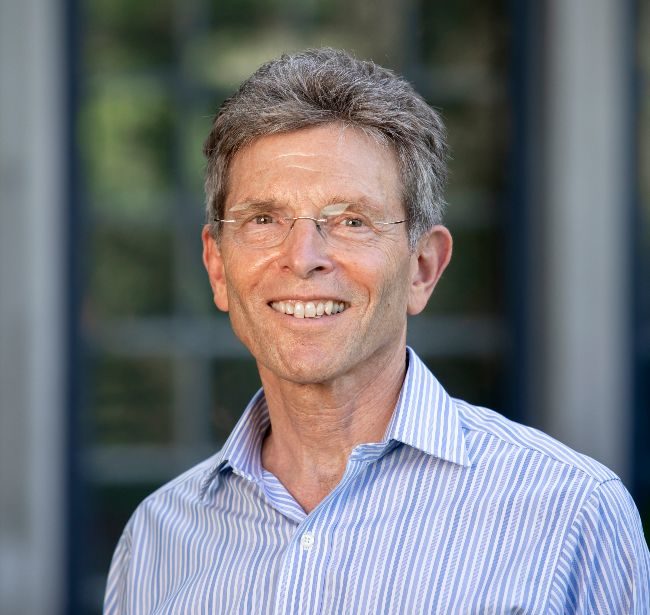 Robert Pestronk
Robert Pestronk
Former Executive Director of the National Association of County and City Health Officials
(NACCHO)
Former Health Officer in Genesee County, Michigan
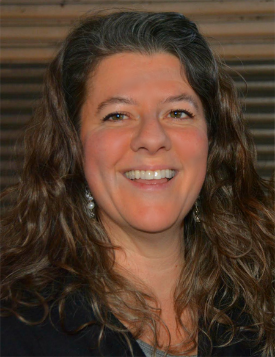 Meredith Buhalis
Meredith Buhalis
Program Manager at Washtenaw Health Plan
Washtenaw Health Department
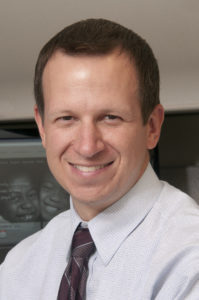 Brian Hartl
Brian Hartl
Epidemiologist and Director of the Center for Community Health Strategy
Kent County Health Department
